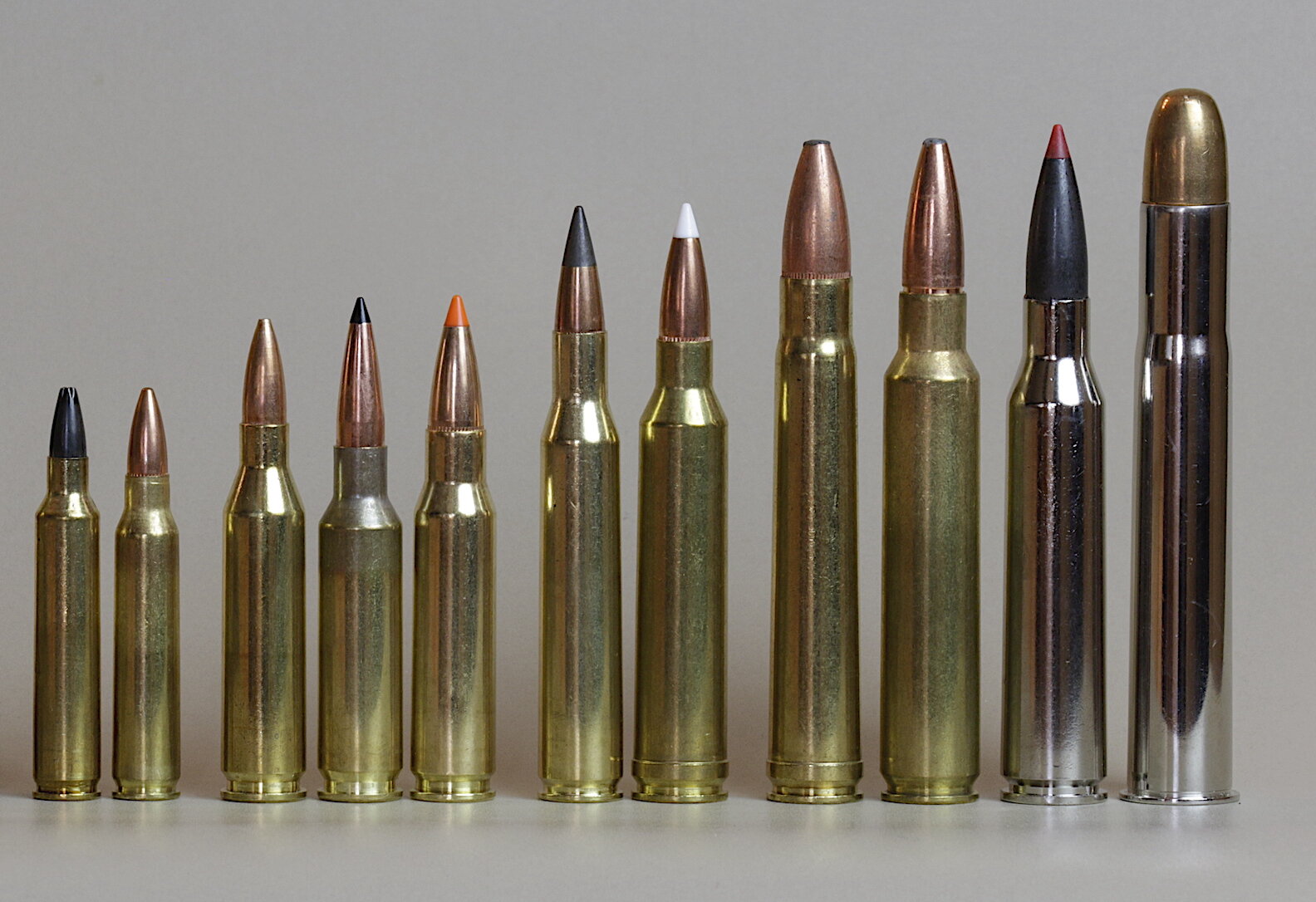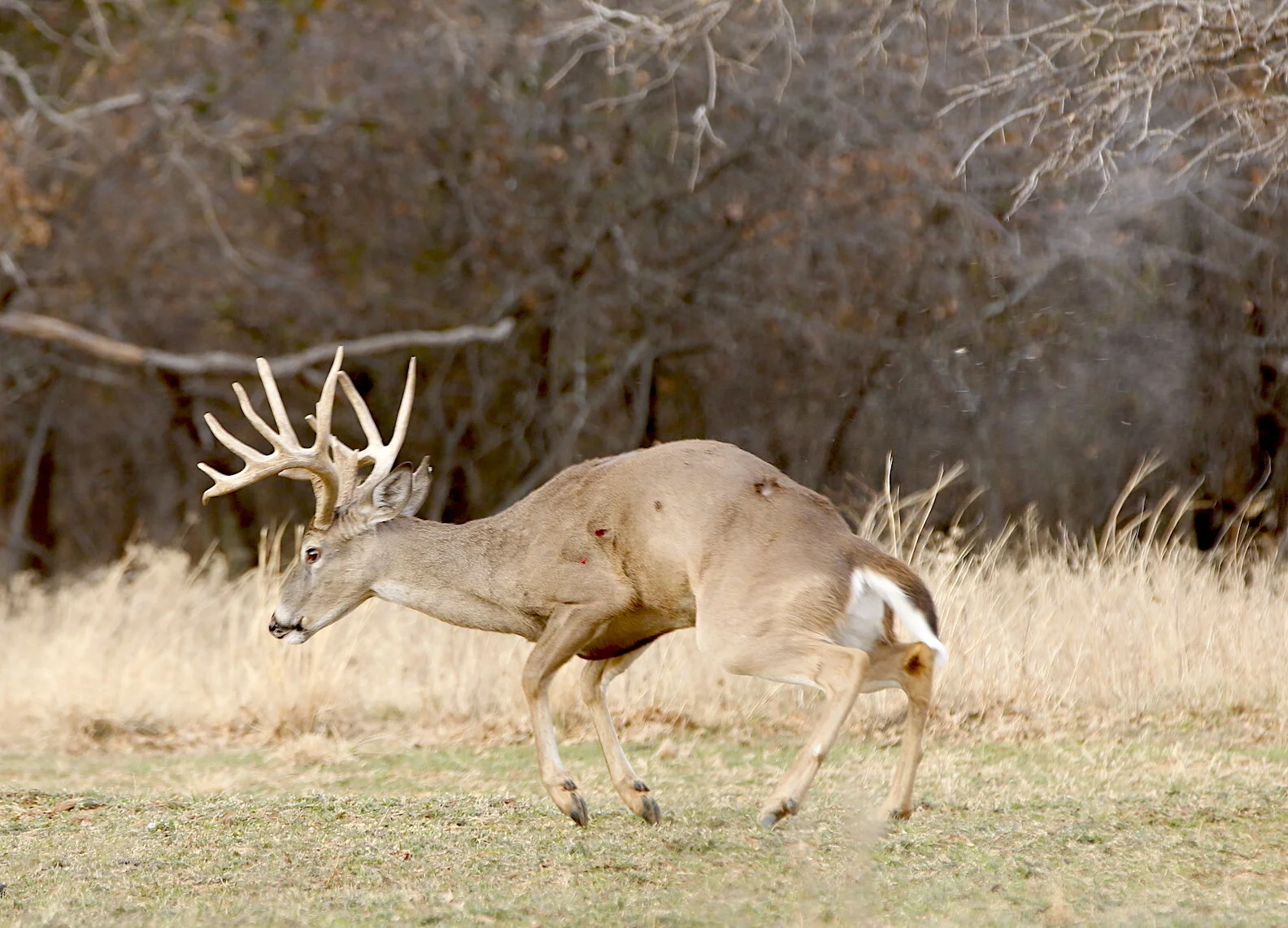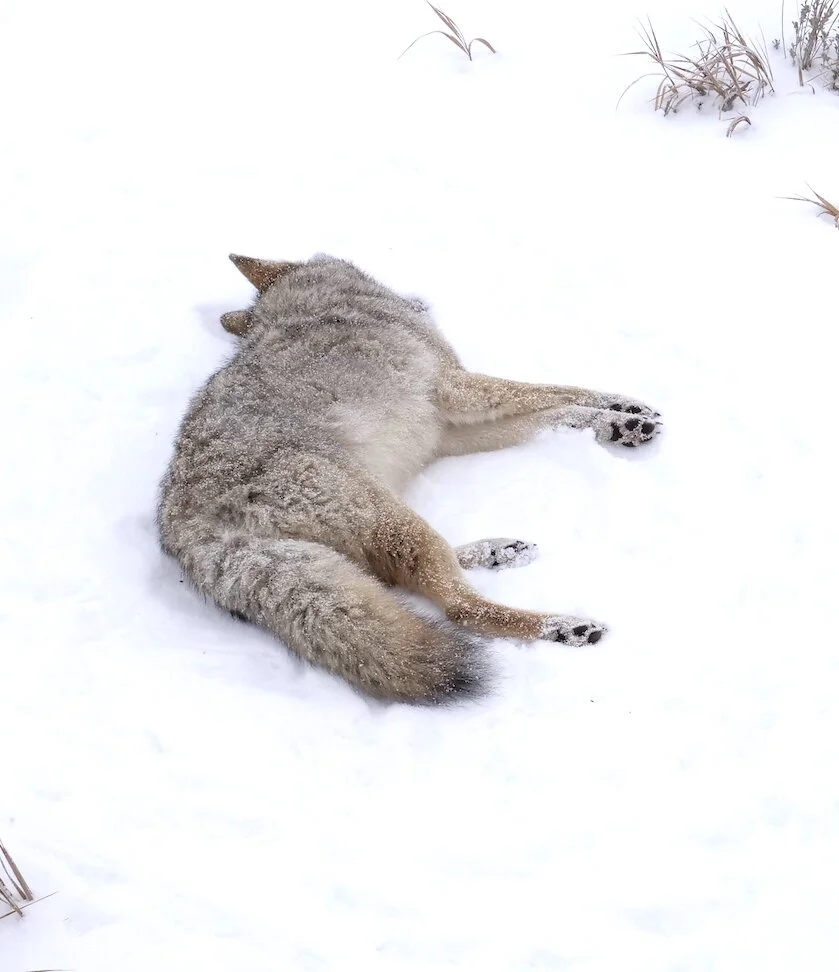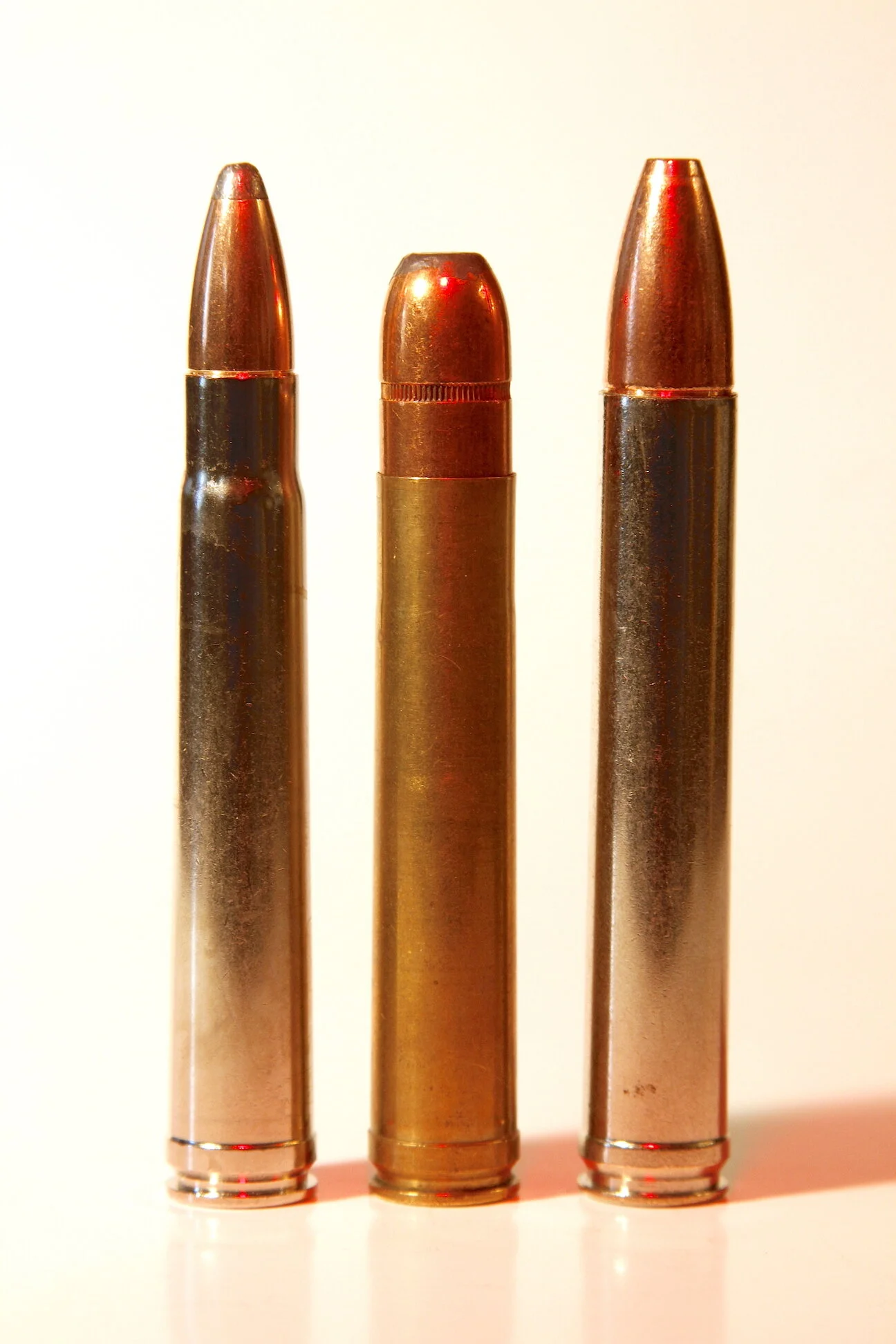Killing the Energy-Killing Myth
I read a recent “Best Cartridges To Hunt Elk” blog that advised, and I paraphrase, “Most effective elk cartridges need to be flat-shooting and hit with enough energy to effectively dispatch a big bull.”
And that’s a lot of bull.
Because energy doesn’t kill.
A big, tough animal like this 800-pound bull elk requires a LOT of bullet energy to kill, right? Wrong.
The Myth of Killing-Energy
“Killing-energy” is one of the biggest myths, or at least misconceptions, in hunting. But a profitable one. Belief in it has led to new cartridges, bullets, and rifles year after year for decade after decade.
Ill advised, yet successful extreme-range shooting with anemic rounds like 6.5 Creedmoor have poked some holes in the killing-energy theory, but hardly killed it. Nor will this article. But by reading it you might get a better understanding of what goes on when you throw a small stone at high speed into the thoracic cavity of an elk. Or mule deer. Or buffalo. Or… any other game including jackrabbits.
Where do you draw the line? Which of these centerfires is finally powerful enough to kill an elk? And which bounces off? I’ll bet dollars to donuts the 243 Winchester (third from left) has terminated more elk than the 338 Lapua Magnum (2nd from right) and 470 Nitro Express combined.
Actions and Reactions
We’ll begin with (and should probably end with) the unimpeachable Sir Isaac Newton’s third law of motion: For every action there is an equal and opposite reaction. The quantity of energy in a bullet sent toward your game is the same as the energy sent back into the rifle — and your shoulder behind that rifle. So, if the energy in the recoiling rifle didn’t instantly kill you, how can the energy in the bullet instantly kill your target animal of the same or larger size? You absorbed all that energy. Why aren’t you dead?
This shooter just absorbed 65 foot-pounds of recoil energy from a 416 Rigby throwing a massive 400 grain bullet. If energy kills, why is he still standing?
Hemorrhaging, Not Squashing
The obvious answer is that the rifle didn’t break your skin, tear your aorta, or perforate your lungs. The bullet probably did that to your deer or elk. If the bullet tears the proper vital organs and enough of them, the animal will die. But not from massive energy. From massive blood loss.
That this occurs is proven by misplaced shots that strike, say, the paunch or rump. Or even the shoulder without penetrating to the vital organs beyond. The target animal absorbs all the energy carried by the bullet, yet isn’t killed by that energy.
If the bullet breaks enough support structure — for example a leg bone — the beast may fall, but odds are it will not be instantly killed. More likely it will scramble up and run off three-legged, sometimes surviving to the next hunting season, unimpressed by all that killing-energy of the “best cartridge” you used to wound it.
If energy kills surely this whitetail would have been flattened by the 7mm Rem. Mag. that just hit it with 3,200 f-p energy. You can see by the dust and hair in the air behind its rump that it’s leaped forward already and is still on its feet. That buck went on to dash about 80 yards before fainting from low blood pressure, then expiring from severe hemorrhaging causing brain cells to die.
Then Why Those Dramatic DRT Responses?
All of us have seen and probably caused what appear to be pretty dramatic “dead right there” hits on large game. If that’s not killing-energy, what is it? Most likely a central nervous system strike. Hit the brain and/or spinal column forward of the withers (above the shoulders) and most game is killed instantly. Unplugged, as we used to say.
In contrast, strike that same animal with that same bullet behind the withers, and it will lose motor control behind that point, but not killed outright. Broken back. Same bullet, same energy on target, but dramatically different results. Broken back in front of the shoulders and instant death. Broken behind with the same bullet, same energy — and just paralyzed behind that wound. Why? Because energy alone doesn’t kill. It has to be applied to the right place. And then not much is required.
Additional proof of this comes from 22 rimfires and 45-pound-pull bows flinging target arrows. Park a measly 40-grain 22 slug with 100 f-p energy in the spinal column of the neck of an elk and it’s as dead as if hit with a 300-grain solid from a 375 H&H Magnum carrying 3,700 f-p energy. Drive a target arrow into that same spinal column and you’ll get the same results. Obviously very little energy is needed to instantly terminate even large game if that energy is applied to the proper place.
A puny 60-grain .224 bullet carrying just 1,300 f-p energy killed this buck instantly by breaking its shoulder, then its spine, then its hip before continuing into the prairie beyond, “wasting” some of its energy. I’ll take placement over energy every time.
Launching Deer
What about all those deer that hunters have reported flipping over or blowing ten feet backward after solid, bone smashing hits from super magnums? Is that not an example of killing energy? No, it is not. More likely it’s muscular reactions to the impact. The animal leaped. Again, Newton’s law. If the shot didn’t knock you over, how the heck is the bullet — which has lost considerable energy during its flight downrange — going to have the power to flip an equally heavy or heavier animal into the air? Or push it back ten inches let alone ten feet?
Some of the misconception about this might be the fault of our kinetic energy measurement. A projectile’s kinetic energy (energy in motion) is a product of its weight and velocity. Doubling weight doubles energy. Doubling velocity quadruples energy. This is why 50-caliber blackpowder big game cartridges pushing 400-grain bullets 1,600 fps back in 1880 have been superseded by 7mms pushing 150-grain bullets 3,200 fps in 2021. The high velocity 7mm delivers more energy. (3,411 f-p for the 7mm vs. 2,274 f-p for the 50-caliber.) Most bottlenecked, smokeless-powder cartridges of about 25-caliber and larger throwing 120-grain bullets and heavier deliver more energy at 100 yards than do most the heavy, slow bullets of yesteryear.
To fully appreciate this we should define what kinetic energy in foot-pounds means: a foot-pound of energy is enough to, theoretically, raise one pound of weight one foot off the ground. A bullet carrying 3,000 foot-pounds of energy, then, should push a 100-pound pronghorn or whitetail doe a good 30 feet, right?
Wrong. I know because I’ve tested the theory hundreds of times. I’ve hit 30-pound coyotes with bullets packing 3,000 f-p energy and blew them exactly nowhere. They collapsed in their tracks in the snow. The bullet stayed inside, too, so the little coyote absorbed all that killing-energy. But got pushed not so much as an inch. Another coyote took a 180-grain bullet from a 300 Win. Mag. to the chest and dashed a good 30 yards before collapsing from massive hemorrhaging.
Let’s Be Honest
Honestly, bullet energy matters. A little. Our problem is conceptual. We marry our misconceptions to macho myths about massive metallic muscle powered by piles and piles of powder. Our rifles kick and roar. Surely these fire-breathing dragons have the power to deliver an instant death blow, right? Not necessarily.
Much as we’d like to believe we are wielding the Hammer of Thor, we’re really just throwing glorified stones fast enough to penetrate to vital organs and break them down. Regardless their diameter and mass, our bullets are just bits of ripping and tearing metal engineered to render vital, life supporting organs ineffective. When the cardio-pulmonary system can no longer deliver richly oxygenated blood to the brain, it fails. Blood pressure drops. The animal gets dizzy. Loses consciousness. Dies. This takes several seconds, perhaps minutes depending on the degree of hemorrhaging. During that time the animal retains function to stand, walk, run, forage, fight, mate… I’ve seen it all. Including expiring on the spot, instantly. Whether hit with a 55-grain bullet or 500-grain.
Surely the massive energy of a 375 H&H, 458 Win. Mag., or 458 Lott will kill a deer instantly every time, right? Don’t count on it. I’ve seen half-grown whitetails take a 50-caliber through the chest and run 25 yards before falling.
Yes, sometimes some combination of bullet energy, where it lands, the target animal’s heart beat, blood pressure, adrenaline, and the phase of the moon combine for an instant kill. But let’s not fool ourselves. This wasn’t killing energy. If it were it would work nearly every time.
Be A Complete Hunter
The shot is not the end of the hunt. Woodsmen learn to read sign from an animal’s reaction at the shot to tracks, blood, clipped hairs… Expect game to run for several seconds after a good heart/lung shot.
There’s nothing wrong with trying to find and use the rifle, cartridge, and bullet we imagine to be the Hammer of Thor, but as woke, responsible hunters, we must accept and perfect our other essential hunter skills — tracking and blood trailing. Failing to drop an animal in its tracks is no condemnation of anyone’s hunting/shooting skills. It’s the reality of physiology. This is the real world. Just as prey struggles and fights to escape the ripping claws and fangs of wolves, bears, cougars, lions and leopards, it fights to escape ripping bullets. And just as wolves and lions continue to pursue and attack prey animals they’ve wounded, so must hunters track, blood trail, and find game we’ve struck with mortal blows. Hunt honest and shoot straight. After that, track relentlessly to recover your game.









